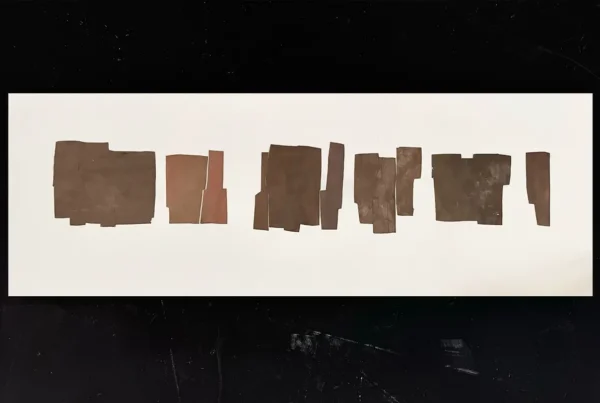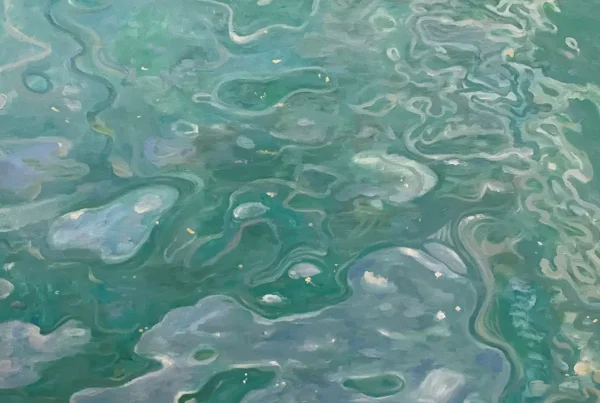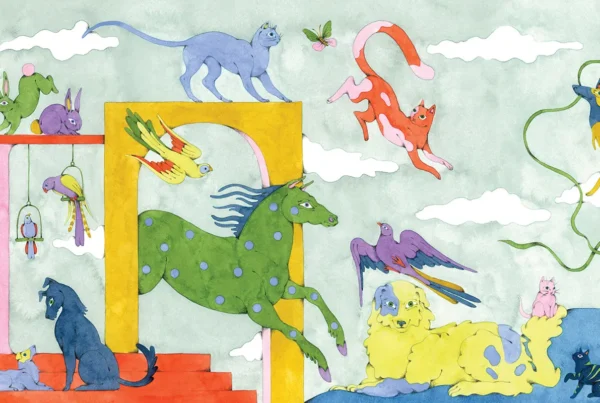“I like to take an object and expose it to light to bring out its best, then capture that beauty on paper or canvas.”

Reimagining Reality with Pencil and Passion
In an age where digital media saturates the visual landscape, Marcello Barenghi stands out for his strikingly lifelike illustrations that often cause viewers to question what is real and what is drawn. Known for his hyperrealist renditions of familiar objects on neutral gray backgrounds, Barenghi has carved a niche by transforming everyday consumer items into captivating visual experiences. His work frequently features iconic pop culture products and nostalgic memorabilia, creating a powerful emotional connection with audiences while showcasing extraordinary technical skill. With millions of online followers and viral time-lapse videos that showcase the intricate drawing process from start to finish, Barenghi has become a symbol of artistic persistence, technological adaptation, and stylistic individuality.
Barenghi’s story is not simply one of natural talent but also of adaptation in the face of technological change. His initial ambition to become a traditional illustrator collided with the rise of computer graphics in the 1990s, prompting him to leave the field altogether. Instead, he pursued architecture and spent years away from art. It wasn’t until the era of social media and video-sharing platforms that he found a new way to present his skills to the world. By recording and sharing the entirety of his drawing process—without edits or interruptions—Barenghi finally succeeded in conveying the authenticity of his craft, winning over an audience that could now witness every pencil stroke and detail in real time.
Despite the photographic accuracy of his artworks, Barenghi does not chase perfection. Instead, he embraces flaws as an inherent part of his style, believing they add identity and humanity to his illustrations. This perspective underscores his core artistic philosophy: that ordinary objects, even something as overlooked as a potato chip bag or a bottle of ketchup, hold intrinsic beauty when viewed through the right lens. His ability to elevate such items from the mundane to the magnificent invites viewers to reconsider the aesthetics of the commonplace, offering not only a visual spectacle but also a quiet meditation on nostalgia, consumerism, and the overlooked artistry of design.
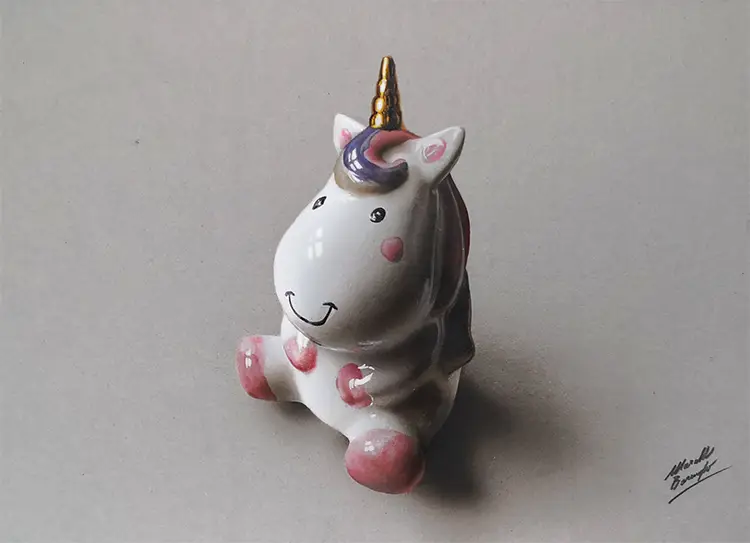
Marcello Barenghi: Drawing Through Memory and Time
Barenghi’s childhood in Milan was infused with artistic energy, shaped in large part by his father, who introduced him early on to the world of painting, modeling, and imaginative play. The ceiling of his bedroom was adorned with handcrafted model airplanes, sparking a fascination with form and movement that would later influence his sense of detail and composition. One of his earliest creative moments came at just 18 months old when he unknowingly created a three-dimensional doodle of an airplane, an act that his parents preserved as a harbinger of his future. That tactile desire to render what he couldn’t touch with his hands found expression through pencil and paper, setting the foundation for a lifelong obsession with drawing.
His early artistic development unfolded through a steady progression of discovery. During elementary school, he became captivated by superheroes and mechas, drawing characters like Spider-Man, Steel Jeeg, and Mazinger with obsessive dedication. A pivotal moment came at age 11, when he won a television contest with a caricature of Italian footballer Gaetano Scirea, earning a ZX81 computer. The fact that the judges believed his work to be that of an adult underscored both the sophistication of his technique and the underestimated potential of young artists. His parents began to actively support his growing talent, which continued to flourish through adolescence with competitions, school accolades, and an increasing command of diverse media including charcoal, tempera, and watercolor.
Barenghi’s transition into more serious studies began at Milan’s Boccioni Art School, where he deepened his understanding of traditional techniques and was mentored by respected art restorer Luciano Formica. These years were also marked by his discovery of the airbrush, a tool that resolved his earlier frustration with the limitations of colored pencils. This breakthrough allowed him to blend his pencil work with smooth, painterly gradients, further enhancing his illusionistic style. It was during this period that he became enamored with artists like Derek Riggs and began crafting elaborate fan art of Iron Maiden’s Eddie, refining both his technique and visual vocabulary. At Milan’s School of Illustration “Arte e Messaggio,” teacher Anna Montecroci first identified Barenghi’s unique style as hyperrealism, advising him to take his talents abroad—a dream interrupted by the inevitable rise of digital tools and the fading demand for traditional illustrators.
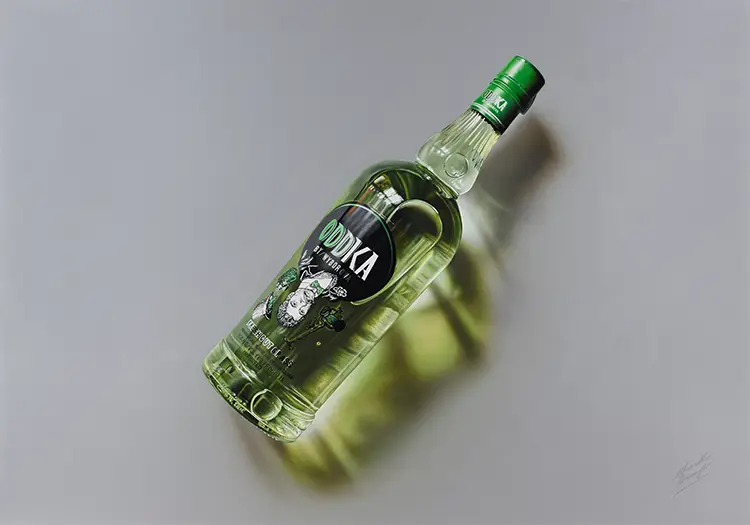
The Light Behind the Line: Inspirations and Influences
Barenghi’s influences span a dynamic range, from comic book legends to Renaissance masters. His initial encounters with visual storytelling came through the pages of Marvel Comics, where he learned to control markers and understand anatomy and action through superheroes. As he experimented with different media, his artistic diet expanded to include Derek Riggs’s surreal cover art, Richard Corben’s muscular fantasy worlds, and the mechanical sensuality of Hajime Sorayama. Each of these figures shaped his technique and introduced new ways of perceiving detail, texture, and the expressive potential of light. Later in life, Barenghi’s reverence deepened for painters like Caravaggio and Jan van Eyck, whose mastery of chiaroscuro and precision mirrored his own evolving priorities.

What now defines Barenghi’s creative process is his fascination with how light transforms objects. Rather than merely replicating a subject’s physical appearance, he studies how illumination interacts with its surfaces, colors, and contours. This obsession leads him to stage each composition carefully, often positioning his subjects under specific lighting conditions to bring out hidden facets and tonal richness. Whether it’s a crumpled soda can, a glistening plastic wrapper, or a shiny chocolate bar, the chosen object becomes a miniature theater of reflection and shadow. He then renders this intricate play of light with pencils, markers, and airbrush, pushing the boundaries of illusion while infusing each piece with a sense of quiet drama.
Although his current work often centers on branded and commercial objects, Barenghi uses them to evoke personal and collective memories. He highlights how the simplest artifacts—items like discontinued candy, retro gadgets, or vintage packaging—can stir feelings of nostalgia and cultural resonance. By elevating these common items to the level of fine art, he subverts the traditional boundaries between high and low culture. The choice of subject matter becomes a subtle narrative tool, inviting the viewer to reflect not only on the aesthetics of consumerism but also on the intimate relationships we build with the objects that shape our lives. In this way, his work is not just about visual deception; it is about emotional truth.

Marcello Barenghi: Art, Memory, and the Unfinished Face
Among Barenghi’s most personal works is a portrait he co-created with his father, an emotional collaboration that reveals the deeper roots of his artistic identity. Created during a period when the two shared a small studio in Milan, the painting began as a tribute to Barenghi’s mother. His father initiated the piece, managing most of the composition but struggled to capture the face, repainting it multiple times without satisfaction. Eventually, he asked Marcello for help, and it was the younger Barenghi who brought the portrait to completion. Years later, the piece resurfaced on his social media as a heartfelt homage to his parents, encapsulating not only the shared love of art within his family but also the intimate interplay between personal relationships and creative expression.
This emotional intersection between life and art resurfaced more recently as Barenghi paused his regular work rhythm to care for his ailing mother. During this time, his weekly drawings and videos—normally planned with precision and discipline—became rare. This break from productivity marked a shift not just in his schedule but in his outlook. The pause allowed him to reflect on the role of art not only as a career but as a legacy, something deeply entwined with his family’s history and emotional milestones. Returning to the studio after this difficult chapter, he began work on two new drawings that depart significantly from his usual approach, signaling an openness to experimentation and a desire to evolve beyond established boundaries.
Barenghi’s process remains rooted in ritual and commitment. Each drawing is conceived, executed, and filmed in one uninterrupted session, often lasting between four to eight hours. This method captures the authenticity and continuity of creation, aligning the viewer’s experience with the artist’s own. The time-lapse videos, shared widely on social media, serve as both artistic statement and educational tool, inviting a global audience into the invisible world behind the finished product. As he embarks on a new phase of artistic exploration, Barenghi continues to challenge expectations—not only of what hyperrealism can be, but of how it can speak to memory, presence, and the quiet poetry of ordinary things.




